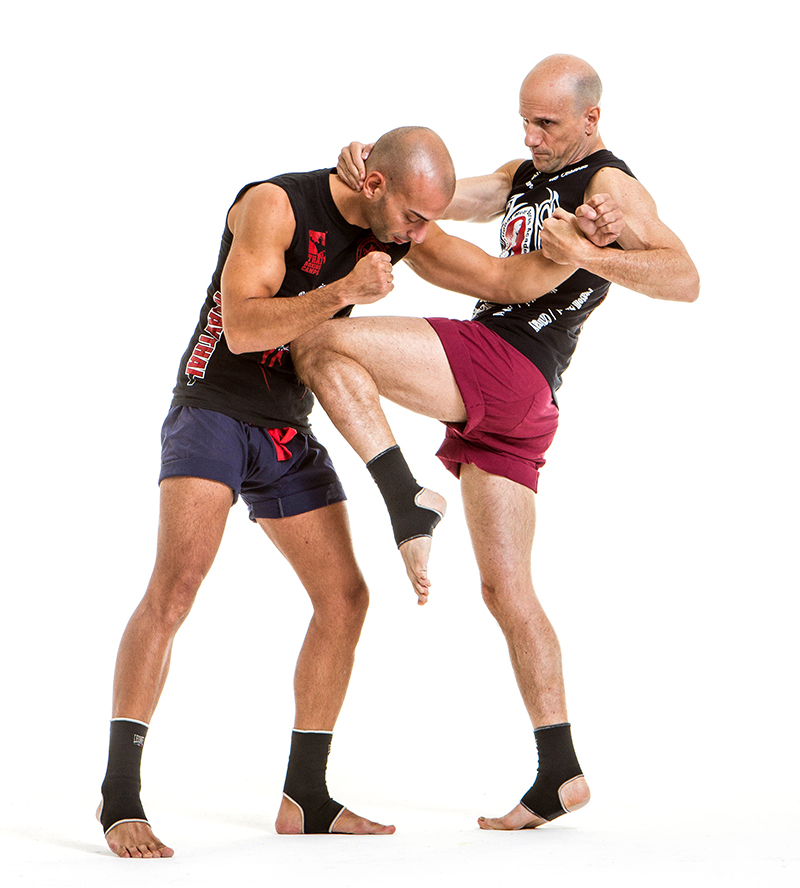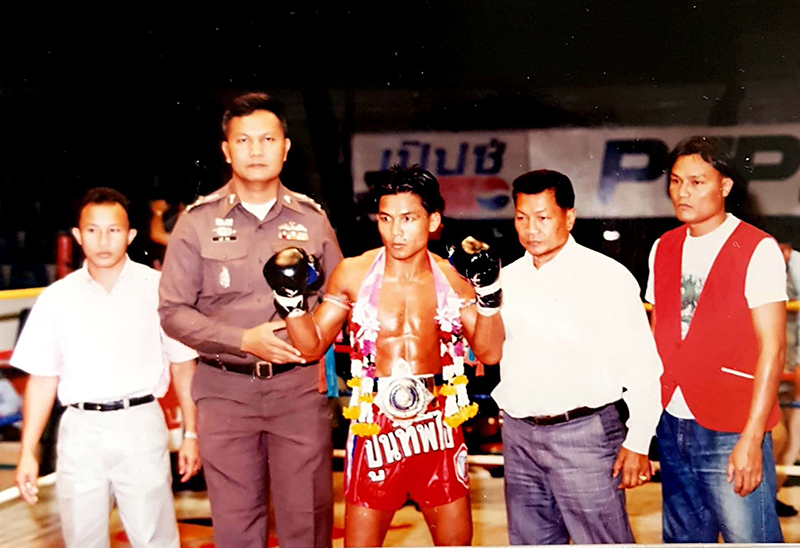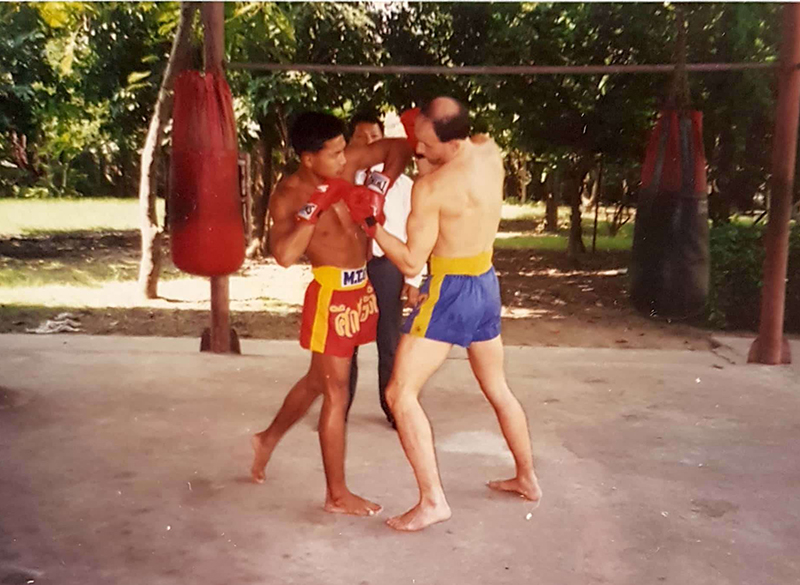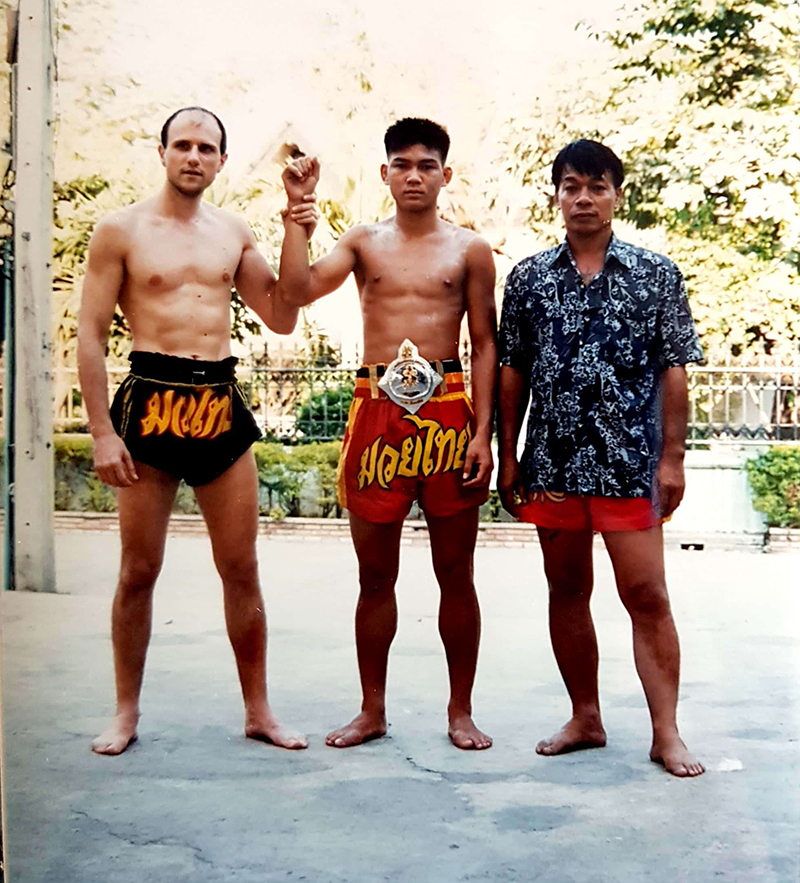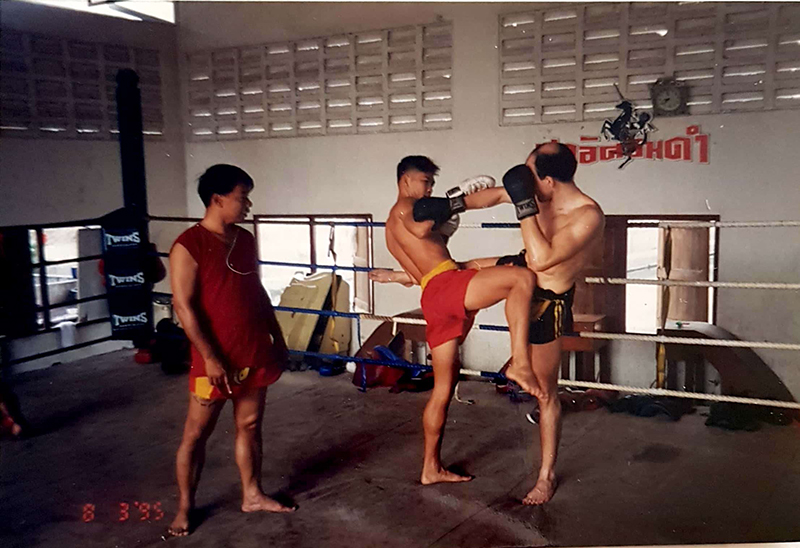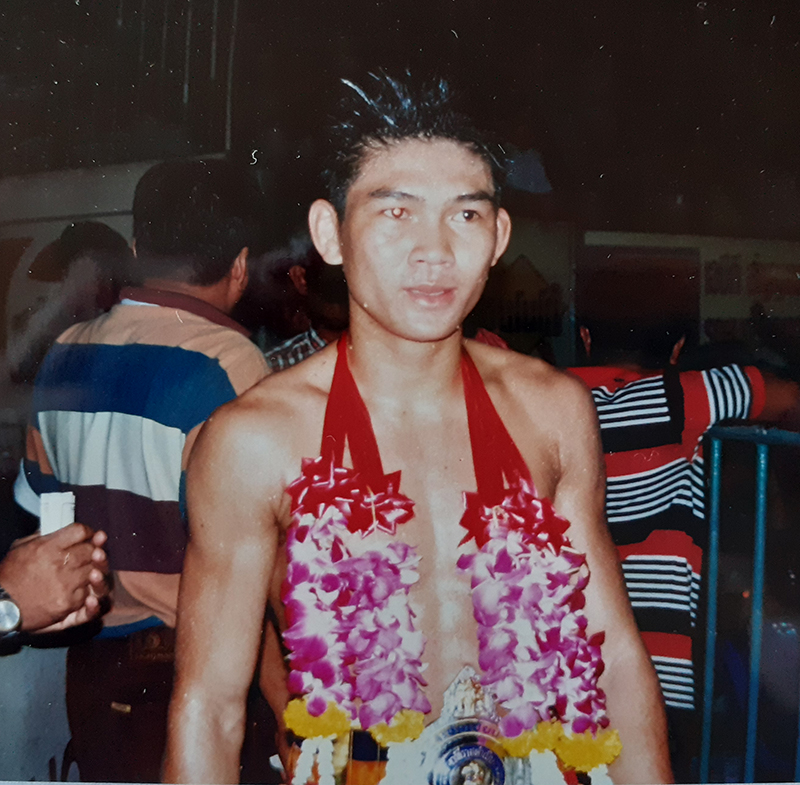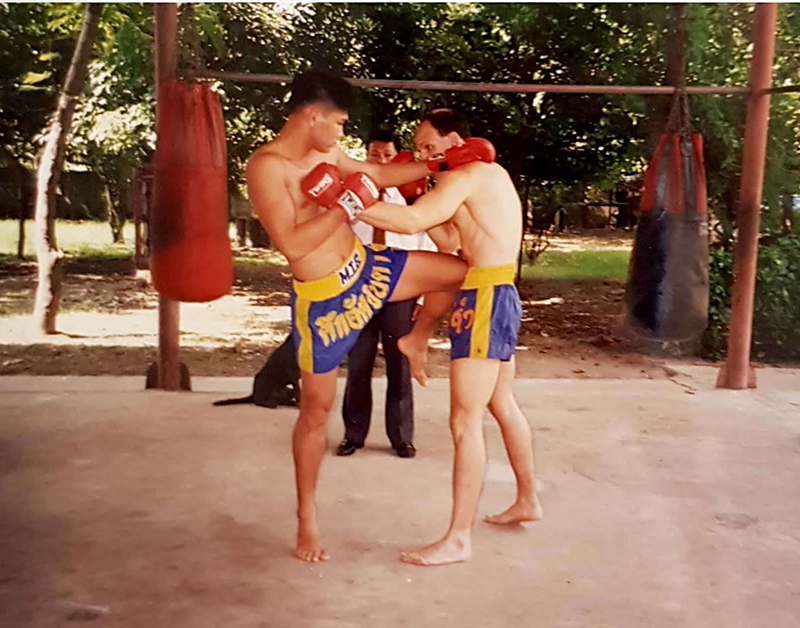
Learning original Muay Thai: the power of team work.
Chapter 3. The lessons of two experts in Thai Grappling
By Marco De Cesaris
The classic dichotomy between grapplers (fighters who use wrestling as their primary combat tool) and strikers (those who use blows to defeat their opponents) has been in use in Muay Thai since a long time. Obviously, no skilled Thai Boxer can reach the pinnacle of his sport without a sound knowledge of both grappling and striking techniques. In fact, all high-level Muay Thai fighters are very strong wrestlers as well as outstanding strikers. Among the very skilled ones, there are a few who base their fighting strategy on aggressive grappling techniques supported by a powerful secondary weapon. The support weapon can be a heavy punch, swift elbow techniques, a strong low kick or a an assortment of throws. Some of the most famous grapplers in modern Muay Thai history who supported their wrestling game with strong boxing techniques, went on to become professional world boxing champions: the emblematic example is Samson Isarn, former Lumpini Stadium champion who, after quitting Muay Thai, became WBF world boxing champion.
Among the great thai boxers with whom I had the privilege to train with at Pinsinchai Gym, two were typical examples of Muay Thai grapplers. The grappling style presently in use in Muay Thai is a modified form of traditional Kod Rad Fad Wiang, a technical branch of ancient Muay Pram (Thai wrestling)
. Because of the introduction of modern rules most traditional wrestling techniques had to be abandoned. However, several effective holds and some off-balancing and throwing techniques are still used today by all boxers. Both the athletes I am talking about based their fighting strategy on a sound thai wrestling background. Both were exceptional athletes. Both were Rajadamnern Stadium champions at the time of my stay. However, each one of them displayed different technical characteristics that made their fighting style really unique. I learned a lot from them and their styles became an essential part of the basic skills I tried to teach my boxers in the years to come. These two grappling specialists’ ring names are Thailand Pinsinchai and Sanken Pinsinchai.
Case study 1: Thailand Pinsinchai.
A smart fighter like Thailand Pinsinchai is the embodiment of the ideal combination between a skilled grappler and sharp striker. His grappling strategy was very sophisticated: in fact, he oftentimes smartly combined wrestling holds with vicious elbow strikes. While the opponent was busy defending himself from Thailand’s wrestling holds, one or more explosive elbow strikes seemed to come out of nowhere, most of the times reaching the intended target in a blink of an eye. As a result, his opponents were put in a constant state of anxiety, always guessing what would have been his next move.
Here is an example of his skill. The opponent in this fight was a renowned knock out artist of those years, Sukhothai Taxi Meter (he also became Rajamnern Champion). This thai boxer’s heavy punches were feared by all top competitors of both Lumpini and Ranjadamnern Stadiums. Thailand Pinsinchai’s strategy to defeat him was based on quick footwork, swift kicks to close the gap and an accurate clinch work aimed at neutralising his opponent’s heavy artillery. In this instance he traps and throws an elbow, pinch an arm while holding the neck and then strikes with the elbow again. The whole sequence is performed in less than 3 seconds.
His skills toolbox was completed by a number of throwing techniques that he employed when the opponent tried to overpower him or charged him in a desperate effort to overcome the barrage of his swift attacks. In this example, against a rear leg power kick he blocks, grabs the leg and counters with a lighting fast cut kick to heavily throw the attacker.
In the following video-clips, against a charging opponent he just goes with the flow and throws the attacker without apparent effort. Thanks to a sensitivity developed in countless hours of clinch sparring, Thailand Pinsinchai possessed instinctive reflexes that allowed him to bend under the pressure of the opponent and then release the energy created by the opponent’s attack with the greatest fluidity.
Case study 2: Sanken Pinsinchai.
Sanken was the epitome of the brave and strong Muay Thai grappler. In 1993 he was voted as the preferred fighter by thai young people. His fighting strategy was simple: from the start of the fight he moved constantly forward, trying to get hold of the opponent and start throwing heavy knee blows all over his body. His extreme capacity to withstand the opponents’ counter blows represented his support weapon. Being a pure knee strikes specialist, Sanken concentrated all his efforts in closing the gap and grabbing the opponent, not an easy task when you face a top Muay Thai boxer. Therefore, much of his training was devoted to perfecting the aggressive footwork he used to cut the ring and corner even the most elusive opponents (step 1). Once the distance had been cut, the grappler has to apply one or more entry strikes in order to pin the opponent to his position, allowing the application of the initial grabbing technique (step 2).
In Sanken’s case this entry strike was usually a middle range diagonal knee strike or a short swing shin kick aimed at the opponent’s legs or flanks. Other times, he reacted to the opponent’s offence by grabbing the attacking limb (arm or leg) and then retaliating with hard knee strikes aimed at the upper or lower trunk.
Step 3 in the grappler’s march to victory is the application of strong holds to the arms, neck or body of the opponent. The execution of holds have more than one purpose. The first one is to tyre a resisting and strong opponent. The second objective is to inhibit the execution of the opponent’s attacks, overwhelming him with continuous combinations of holds. The third is to open the way to the actual execution of strikes or throws. This was one of Sanken’s strong points. I personally witnessed the gruelling clinch sparring sessions between Sanken and a series of very strong grapplers at Pinsinchai Gym. No less than 1 hour a day nonstop, when a fight was not imminent. When the date of the subsequent fight had been fixed, the hours devoted to that exhausting exercise became 2, per day.
The fourth and final step is the actual series of knee strikes, a sequence of heavy blows that can be aimed at the ribcage, sternum, liver, spleen, lower abdomen, inner or outer thigh and in particular cases even at the head.


